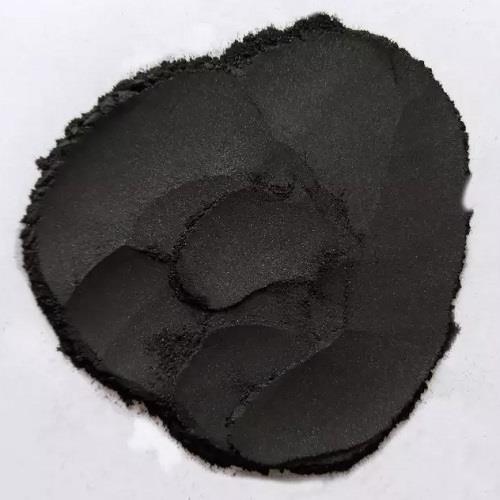kupferchromit Chemische Eigenschaften,Einsatz,Produktion Methoden
R-S?tze Betriebsanweisung:
R8:Feuergefahr bei Berührung mit brennbaren Stoffen.
R37:Reizt die Atmungsorgane.
R22:Gesundheitssch?dlich beim Verschlucken.
R49:Kann Krebs erzeugen beim Einatmen.
S-S?tze Betriebsanweisung:
S17:Von brennbaren Stoffen fernhalten.
S45:Bei Unfall oder Unwohlsein sofort Arzt zuziehen (wenn m?glich, dieses Etikett vorzeigen).
S53:Exposition vermeiden - vor Gebrauch besondere Anweisungen einholen.
Beschreibung
Copper chromite is a black powder and inorganic pigment thatadopts a spinel crystal structure. It can be made by the high-temperaturecalcination of copper(II) oxide and chromium(III) oxide or the thermaldecomposition of copper chromate, which evolves oxygen at higher temperaturesand decomposes to copper chromite.

The copper chromite (CuCr2O4) is one of the most efficient materials, has wide commercial application as catalysts being used in the unit processes of organic synthesis such as hydrogenation, dehydrogenation, hydrogenolysis, oxidation, alkylation, cyclization, etc. It can be used in the pollution abatement as the catalyst to remove aqueous organic wastes, volatile organic compound (VOC) and vehicular primary emissions such as CO, unburned hydrocarbon, NOx and soot.
Chemische Eigenschaften
black powder
Verwenden
Copper chromite is primarily used as a catalyst forhydrogenation reactions because of its ability to hydrogenate functional groupsin aliphatic and aromatic compounds selectively. Industrially, copper chromiteis used to reduce furfural to furfuryl alcohol and butyraldehyde to 1-butanol,partially reduce conjugated dienes to monoenes, and selectively reduce carbonylgroups in vegetable oils. This CuCr catalyst is studied for a variety ofcatalytic applications including converting the hydrogenolysis of cellulose.It is also used as a catalyst for combustion to help control burn rate and as alight-absorbing pigment.
synthetische
Copper chromite is produced by thermal decomposition of one of three substances. The traditional method is by the ignition of copper chromate:
2CuCrO4 → 2CuCrO3 + O2
Copper barium ammonium chromate is the most commonly used substance for production of copper chromite. The resulting copper chromite mixture produced by this method can only be used in procedures that contain materials inert to barium, as barium is a product of the decomposition of copper barium ammonium chromate, and is thus present in the resulting mixture. The by-product copper oxide is removed using an acetic acid extraction, consisting of washing with the acid, decantation and then heat drying of the remaining solid to yield isolated copper chromite. Copper chromite is produced by the exposure of copper barium ammonium chromate to temperatures of 350-450 °C, generally by a muffle furnace:
Ba2Cu2(NH4)2(CrO4)5 → CrCuO3 + CuO + 2Ba + 4H2O + 4Cr + N2 + 6O2
kupferchromit Upstream-Materialien And Downstream Produkte
Upstream-Materialien
Downstream Produkte

